Open Source AI is Catching Up Fast—Here's What It Means for Your Enterprise Strategy
The gap between open source and proprietary AI models is narrowing fast—and it's forcing enterprises to rethink their entire AI strategy.
INFRASTRUCTURE2
10/27/20252 min read
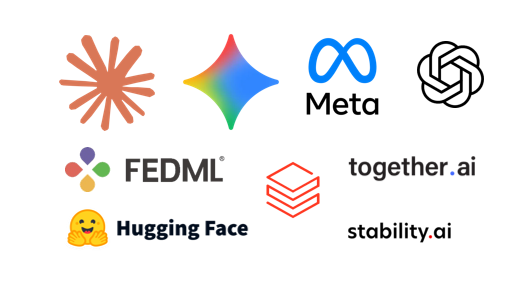

The gap between open source and proprietary AI models is narrowing fast—and it's forcing enterprises to rethink their entire AI strategy.
The Shift is Real
Meta's Llama 3.1 with 405B parameters now rivals some of big GPTs in many benchmarks, while models like Mistral and Qwen are delivering enterprise-grade performance at a fraction of the cost. According to Artificial Analysis benchmarks (October 2025), open source models now match or exceed closed-source alternatives in 60% of common business tasks.
Case Study: Salesforce's Hybrid Approach
Salesforce Einstein switched a portion of their AI workloads to open source models in 2025. Their customer sentiment analysis now runs on fine-tuned Llama 3.1, with substantial savings annually while maintaining accuracy to a high degree. For complex sales forecasting requiring nuanced reasoning, they still use Claude—but only for 30% of queries.
What This Means for Your Business
The cost difference is staggering. Running Llama 3.1 on your own infrastructure costs approximately $0.50 per million tokens versus $15-30 for comparable closed-source APIs. For companies processing millions of queries monthly, that's six-figure annual savings.
But it's not just about money. Open source offers data sovereignty—your customer data never leaves your servers. For healthcare, finance, and legal firms navigating GDPR and HIPAA, this isn't optional; it's mandatory.
Case Study: Bloomberg's Proprietary Advantage
Bloomberg built BloombergGPT by fine-tuning open source LLaMA architecture on their proprietary financial data. Result? A model that performs well in financial analysis tasks while keeping sensitive market data internal. This would've been impossible with closed-source models.
The Strategic Decision Framework
Choose closed-source when you need cutting-edge performance for complex reasoning, have limited ML infrastructure, or require enterprise SLAs with guaranteed uptime.
Choose open source when cost predictability matters, data privacy is non-negotiable, or you need model customization for domain-specific tasks.
The Hybrid Approach
Forward-thinking companies like Shopify are adopting hybrid strategies: closed-source for customer-facing features requiring maximum quality, open source for internal tools and high-volume batch processing. This balances performance with cost control.
The enterprise AI strategy that made sense six months ago may already be obsolete. As Hugging Face CEO Clement Delangue noted,
"We're entering an era where model capability is commoditizing, and infrastructure strategy becomes the differentiator."
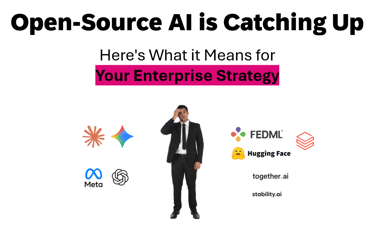
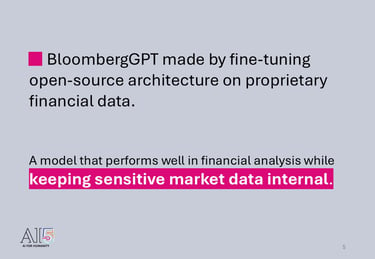
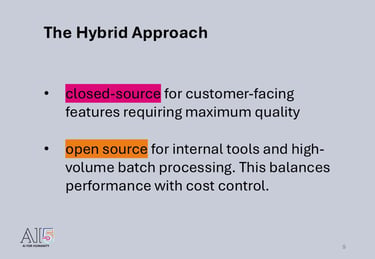
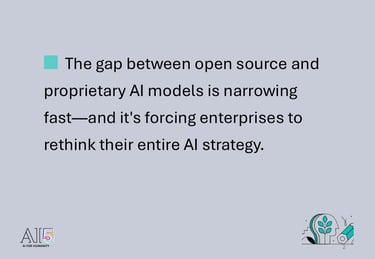

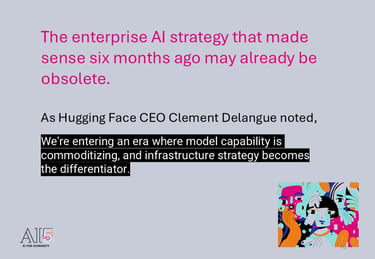

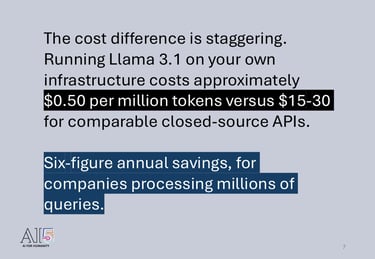

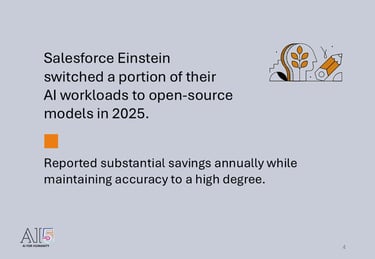
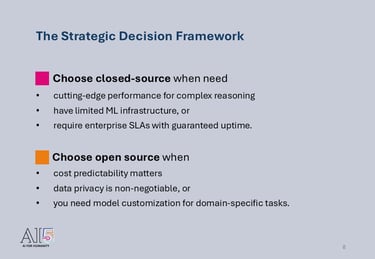











© 2024. All rights reserved.



Delivered from
Switzerland
